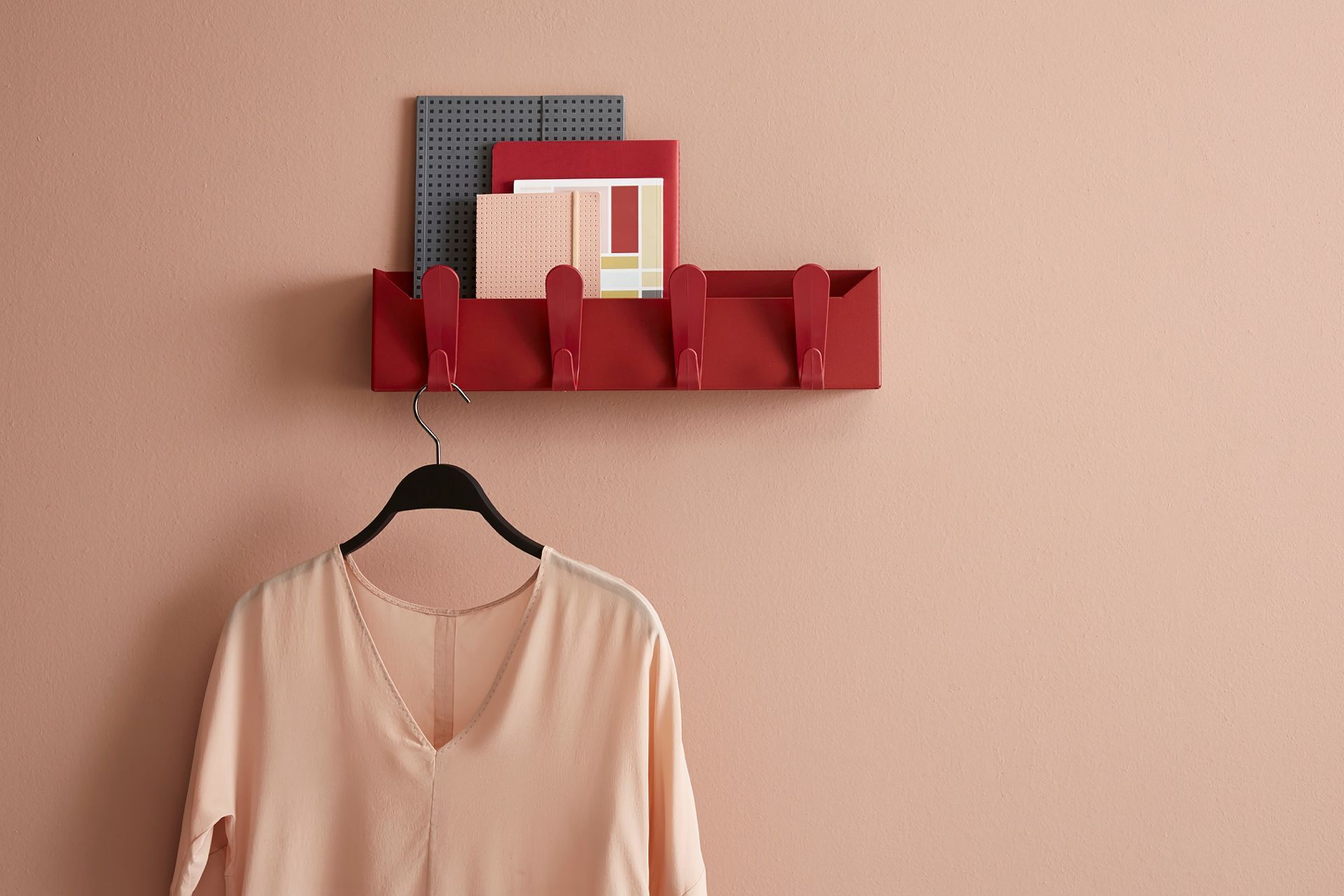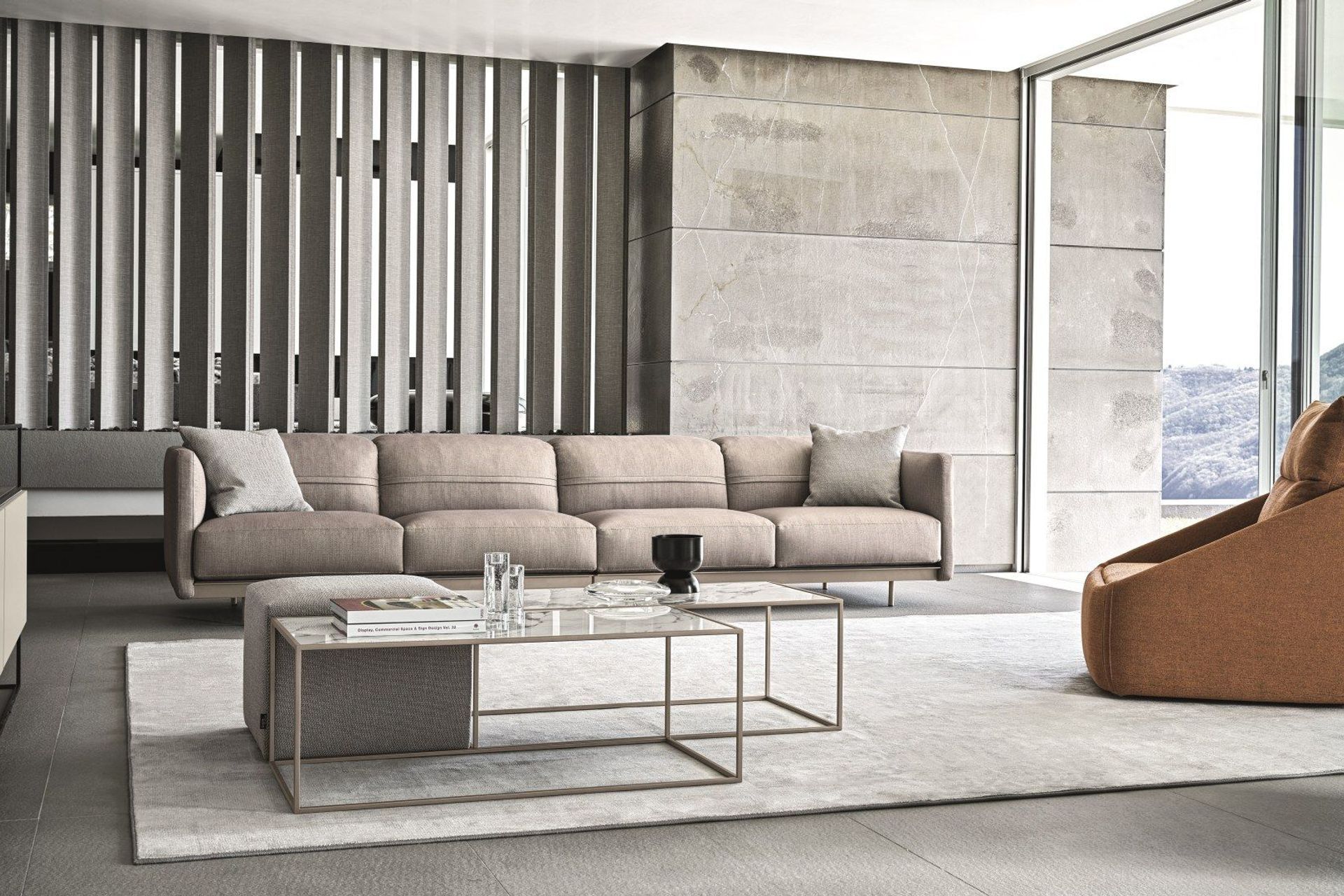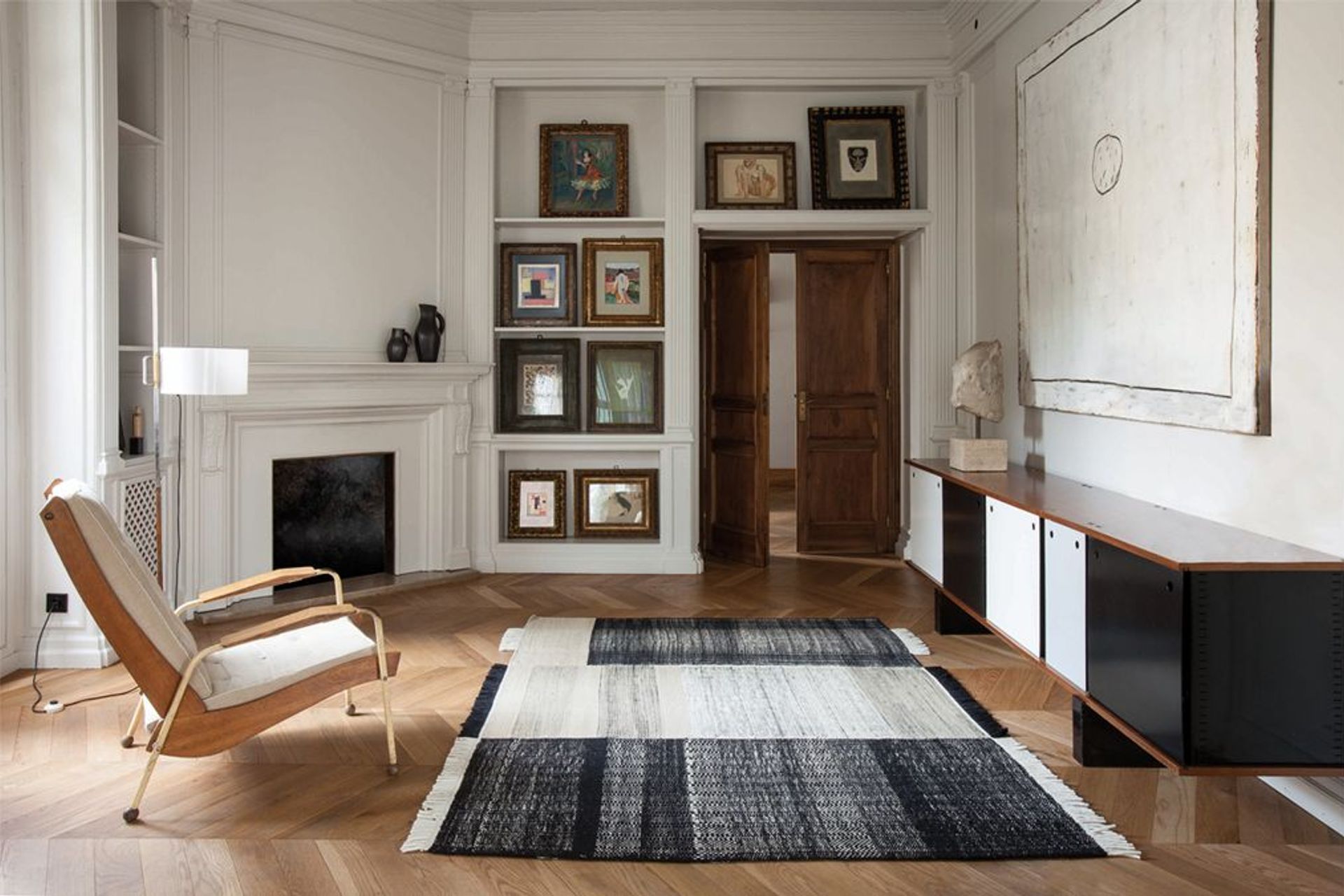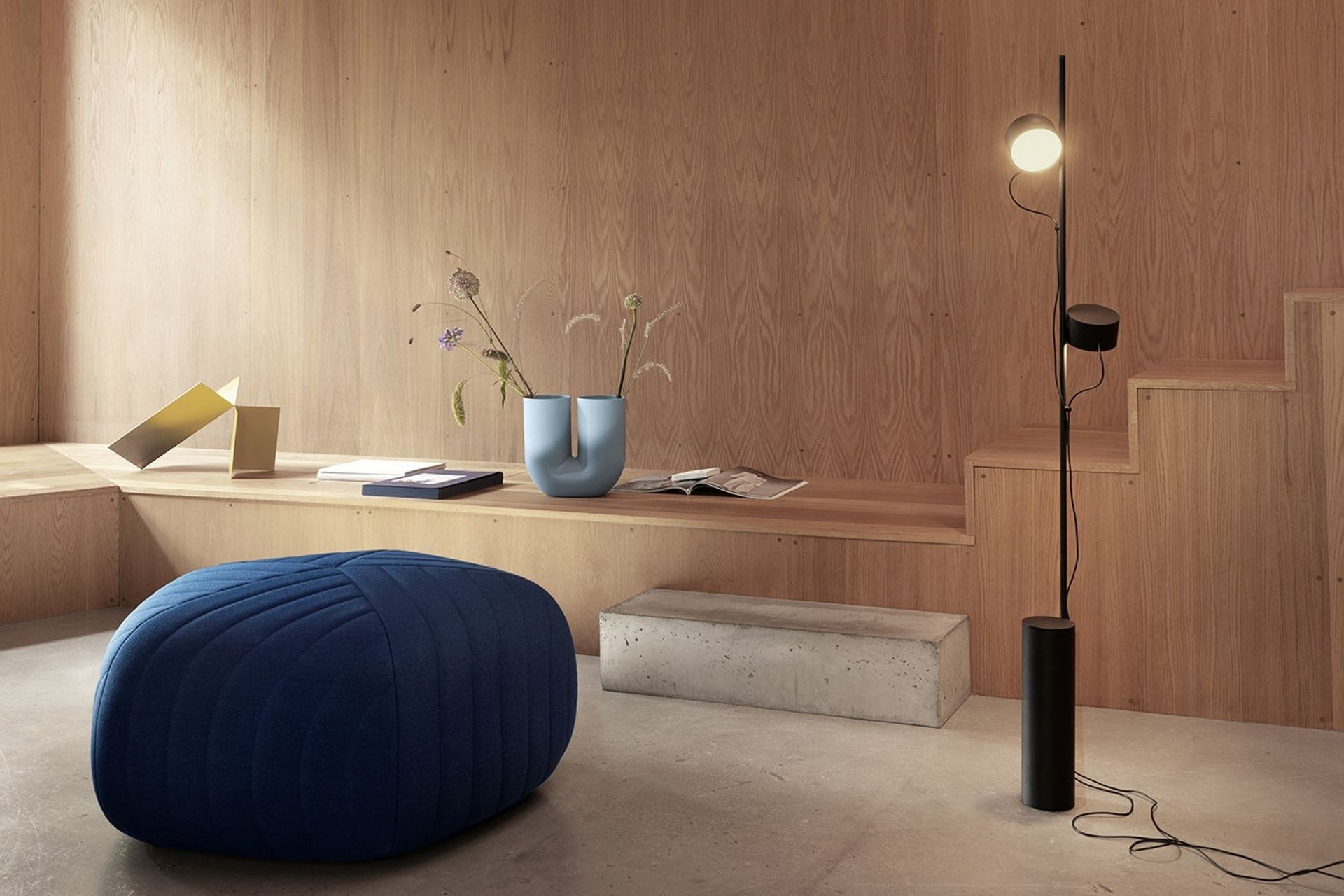The art of less: Minimalist home decor ideas you'll love

1. Off the hook
Use wall hooks in the bathroom or hall to minimise clutter on countertops or inside drawers. You can also use them as a place for your keys, jewellery, hats, and small bags like purses and clutches. This delivers the practical element of minimalism, which often places utility above embellishment. Wall hooks can be just as useful in the kitchen, where they can multiply your storage space without having to add extra bulky storage items.

2. Think multi-functional
Thinking multi-functionally can cut down the number of items in your home without compromising your living space. For instance, try a coffee table that has drawers for concealed storage. This is not only functional, but it can also add some visual interest to the room.
3. Clean lines
A lot of the time, building the right aesthetic is about tricking the brain into seeing particular patterns. For this reason, opt for furniture with clean lines and simple shapes. This will help build a minimalist look with a kind of mental shorthand that tricks the brain into thinking in the same style.

4. A sense of balance
Don't be afraid to use negative space. A minimalist home should have a sense of balance, so if something feels out of place or too busy, then take things away until everything looks just right. Conversely, areas that feel a little too sparse might need just a little tweaking to bring the balance back.
5. Tactical rugs
Rugs are an excellent minimalist feature when used sparingly. If you have hardwood or tile floors, using a rug can add warmth and texture to the room. But be careful not to go overboard — a minimalist space should only have a few select pieces of furniture and accessories, so too many rugs could make the space (especially a small space) feel cluttered.
Related article: How to choose the perfect floor rug for your home

6. Floating shelves
Floating shelves are a minimalist's dream. They're sleek and modern, with no brackets or hardware to distract from the clean look of your walls. You can use them in any room, but they're especially great for displaying photos or artwork without being too intrusive on space. Display wall art by hanging it from floating shelves instead of using traditional picture frames. You can also use floating shelves to create a functional yet minimalist desk area.
7. Art that speaks for itself
You can bring the minimalist aesthetic to your embellishments by letting them speak for themselves. Display your artwork and photographs in simple frames or keep them as frameless displays. This will help the focus stay on the art itself, rather than the frame. Choose minimal wall art that's simple yet interesting, like black and white photographs or monochromatic prints with clean lines and shapes. Place books on shelves or tables with their spines facing out so that they become part of the decor.
Related article: How to choose wall art that works in your home

8. Adaptable spaces
To maintain your minimalist style, think about ways to adapt your space on the fly. For example, use a storage ottoman that can double as a seating option when guests come over. This way, you're not taking up extra space with additional chairs or having to hide away your belongings in another room. Pieces that pull double duty like this will keep your clutter to a minimum.
9. Do it with mirrors
For a basic item of furniture, mirrors deliver a lot of bang for the buck. A few well-placed mirrors will help make the room feel larger and reflect natural light around for a brighter atmosphere. Taking a minimalist design approach means every piece of furniture has to earn its keep, so mirrors are a sensible investment thanks to the many benefits they offer.
Related article: Ways mirrors can make your rooms look bigger

10. Less is more
Minimalism isn't just about using less, it's also about making smart choices with what you do use. For example, if your dining room table is large enough to seat eight people but six will be fine most days of the week, then opt for something smaller and more practical instead. You can often retain the same types of furniture but replace them with a more efficient alternative.
11. Use plants for pops of colour
Incorporate some green into your home decor by using houseplants as accents on tables and shelves. They're a great way to add colour without getting too theatrical — plants lend a quiet dignity despite their visual flourish.

12. Create a focal point
A focal point is essential in any minimalist living room or space. This can be something as simple as a beautiful piece of art or a statement chair that becomes the focus of the room. By having one central item to draw the eye, you'll keep the overall look from feeling too bland or monotonous.
Related article: Luxury minimalist interior design and styling ideas for 2024
13. Build contrast
Don't be afraid to use different materials, textures, and colours to create contrast in your minimalist space. This will help keep things from looking too boring and add visual interest. For example, try pairing a sleek metal coffee table with some colourful throw pillows or using a dark wood dining table that has contrast against the neutral coloured walls of your dining room.

14. Neutral colour palette
Focus on neutral tones such as white, beige, grey, or soft earth tones to create a calm, minimalist aesthetic. You can introduce subtle pops of colour with accessories like cushions or art pieces, but keep the overall palette cohesive and muted for a clean, modern look. Consider using textures like linen, wool, or matte finishes to add depth without overwhelming the simplicity of the space.
15. Layered lighting
A minimalist space can benefit greatly from layered lighting. Go for simple, functional fixtures like pendant lights, wall sconces, or recessed lighting. Dimmer switches are particularly useful for adjusting the ambience without cluttering the space with multiple lamps or lighting solutions. Natural light should also be maximised wherever possible, using sheer curtains or open windows to create an airy, expansive feel.
Related article: Complete guide to contemporary home decor

Minimalise your home for 2025
With these simple tips, you'll be well on your way to creating minimalist home decor that's both functional and stylish. Remember to take it one step at a time and don't feel like you have to do everything all at once. Start with one room or area of your home and go from there. And above all, remember to have fun!
Article last updated: 20th December 2024.
Discover an extensive range of designer home living products on ArchiPro
